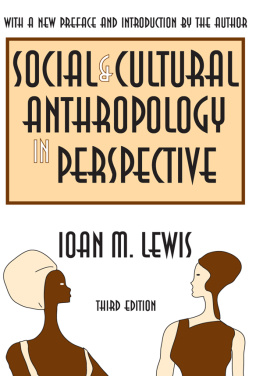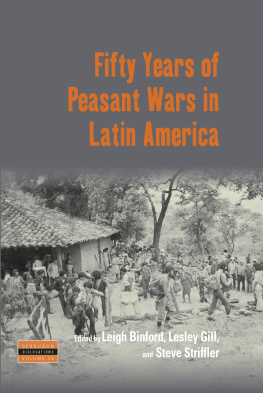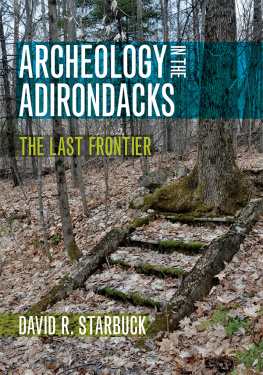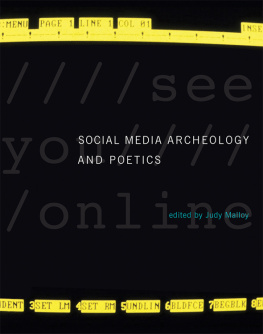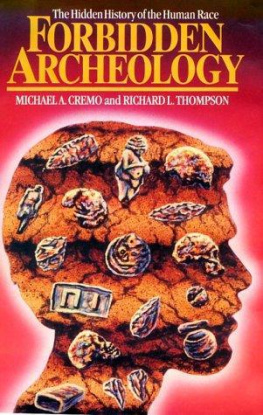Archeology
in Cultural
Systems
Archeology
in Cultural
Systems
Sally R. Binford &
Lewis R. Binford
First published 1968 by Transaction Publishers
Published 2017 by Routledge
2 Park Square, Milton Park, Abingdon, Oxon OX14 4RN
711 Third Avenue, New York, NY 10017, USA
Routledge is an imprint of the Taylor & Francis Group, an informa business
Copyright 1968 by Wenner-Gren Foundation for Anthropological Research, Inc.
All rights reserved. No part of this book may be reprinted or reproduced or utilised in any form or by any electronic, mechanical, or other means, now known or hereafter invented, including photocopying and recording, or in any information storage or retrieval system, without permission in writing from the publishers.
Notice:
Product or corporate names may be trademarks or registered trademarks, and are used only for identification and explanation without intent to infringe.
Library of Congress Catalog Number: 2008018476
Library of Congress Cataloging-in-Publication Data
Binford, Sally R.
Archeology in cultural systems / Sally R. Binford and Lewis R. Binford. p. cm.
Originally published: Chicago : Aldine Pub. Co., [1968].
Includes bibliographical references and index.
ISBN 978-0-202-36237-3
1. Ethnoarchaeology. 2. Social archaeology. 3. Cultural property. I. Binford, Lewis Roberts, 1930- II. Title.
CC79.E85B56 2008
930.1dc22 2008018476
ISBN 13: 978-0-202-36237-3 (pbk)
Since historical events and essential social divisions of prehistoric peoples dont find an adequate expression in material remains, it cannot he right to try to arrive at a knowledge of them through archaeological interpretation.M. S. SMITH.
With the proper approach it should be possible to discover and document a great deal about social systems and the political and religious organizations for most prehistoric... cultures. There must be limits, kinds of information we cannot reconstruct, but until we have tried we shall not know these limits are.W. H. SEARS.
Contents
, Lewis R. Binford
, Albert C. Spaulding
, James Deetz
, Sally R. Binford
, James R. Sackett
, William A. Longacre
, James N. Hill
, George L. Cowgill
, William A. Longacre and James E. Ayres
, Bobby Jo Williams
, Howard D. Winters
, Robert Whallon, Jr
, Frank Hole
, Kent V. Flannery and Michael D. Coe
, Stuart Struever
, Lewis R. Binford
Preface
Most of the papers in this volume were presented at an all-day symposium entitled The Social Organization of Prehistoric Communities held at the 64th Annual Meeting of the American Anthropological Association at Denver in November, 1965. The symposium was organized by the editors, prompted by a conversation the previous spring with Stuart Struever and William Longacre. All of us were engaged in archeological research which represented a departure from conventional studies, and we were aware of the fact that there were many other archeologists in the country also working toward the same ends, utilizing various theoretical and methodological approaches. It was felt that the time was ripe to present the findings of some of these workers, both to inform non-archeologists of what was going on in our sub-field and to stimulate discussion of common problems between archeologists and cultural anthropologists.
The list of participants in the symposium was not exhaustive of those engaged in new kinds of research and should not be taken to represent any school of archeological thinking. The participants were selected with an eye toward maximizing areal and temporal coverage and diversity of innovation in method. Albert C. Spaulding and Paul S. Martin were asked to be chairmen of the symposiums two sessions since they are senior men in the field who have consistently encouraged and inspired many of us and have aided greatly the development and acceptance of new ideas.
The plans for organizing the symposium papers and comments into publishable form were made at the Denver meetings. Since then there have been many changes in specific contributions as well as in the overall plans for presentation. Most of the symposium papers have been substantially revised, and five papers have been added which were not included in the original symposium. The introductory paper here, Archeological Perspectives, was written especially for this volume to provide a background against which the substantive papers might be viewed. Spauldings paper was presented at the 1965 meeting of the American Association for the Advancement of Science and was solicited for this book by the editors. Cowgills paper was read at the Denver meeting of the American Anthropological Association but was not included in the symposium because of lack of time. The paper by Longacre and Ayres was presented to the 1966 meeting of the Society for American Archaeology at Reno. Williams paper was especially written for this volume at the request of the editors. The organization of the entire volume was worked out between the editors and Alexander J. Morin of Aldine Publishing Company.
There were major contributions of individuals and organizations which made publication of this book possible. The tapes of discussants comments at the symposium were transcribed by Mrs. Karla Maddox, who also had the unenviable task of riding herd on the authors to complete revisions on their manuscripts. We are very grateful to Mrs. Maddox for her herculean efforts. Richard Humphrey of the University of California, Santa Barbara, prepared some of the illustrative material, and we are appreciative of his work.
Funds used in the preparation of manuscripts, photographic work, and clerical assistance were provided to the editors by a grant from the Graduate Council of the University of California, Santa Barbara, and additional assistance has been given by the Department of Anthropology, University of California, Los Angeles.
The Wenner-Gren Foundation for Anthropological Research provided a grant to support the publication of this work. We are most grateful to Mrs. Lita Osmundsen, Director of Research, and to the Board of the Wenner-Gren Foundation for their generous and gracious assistance.
SALLY R. BINFORD
LEWIS R. BINFORD
Archeological
Theory and Method
Archeology is neither history nor anthropology. As an autonomous discipline, it consists of a method and a set of specialized techniques for the gathering or production of cultural information (Taylor, 1948, p. 44).
It has been said that archaeology, while providing data and generalizations in such fields as history and general anthropology, lacks a systematic body of concepts and premises constituting archaeological theory. According to this view, the archaeologist must borrow his theoretical underpinning from the field of study his work happens to serve, or do without. Whether the latter alternative be an admissible one does not seem to be an arguable point. Acceptable field work can perhaps be done in a theoretical vacuum, but integration and interpretation without theory is inconceivable.... It seems to us that American archaeology stands in a particularly close and, so far as theory is concerned, dependent relationship to anthropology (Willey and Phillips, 1958, p. 1).




